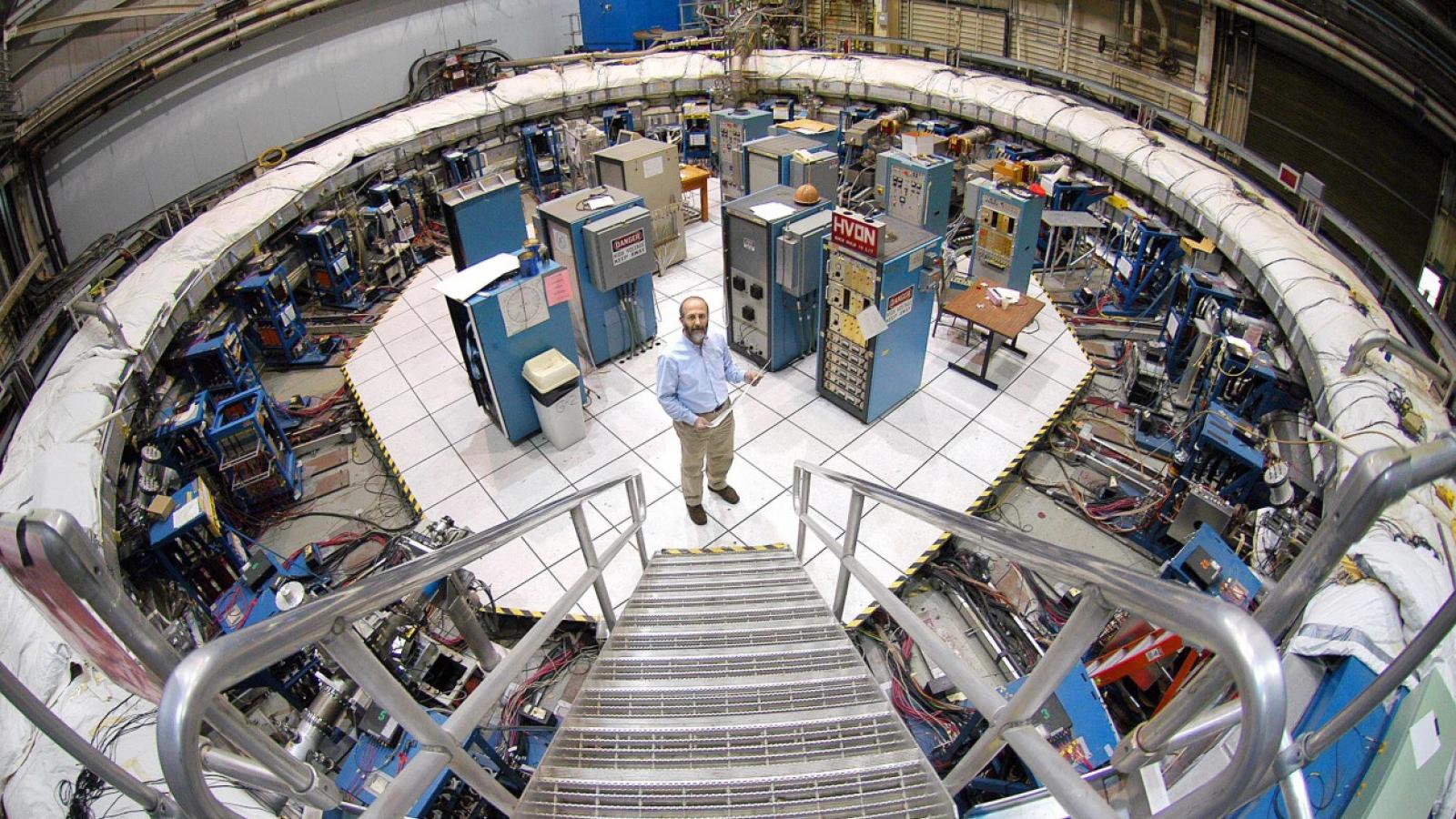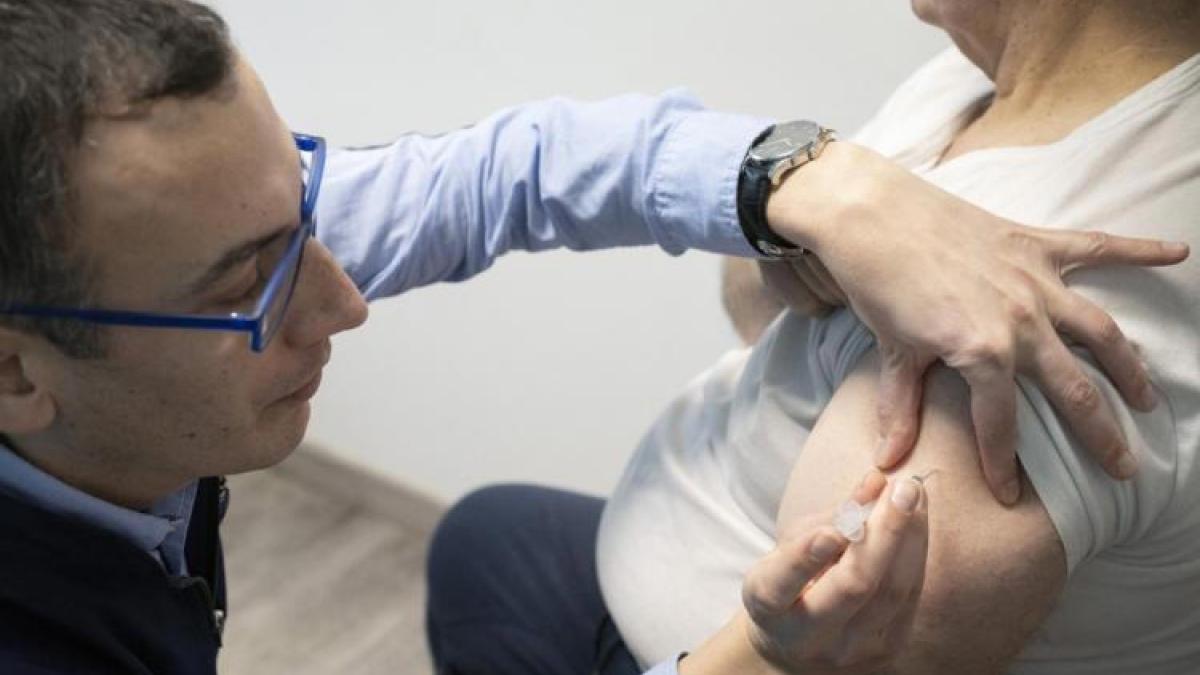Dreams of new physics fade with latest muon magnetism result
Davide Castelvecchi ("Nature")

Precision test of particle’s magnetism confirms earlier shocking findings — but theory might not need a rethink after all.
The muon’s magnetism is still strong. Its most precise measurement yet is in line with a series of earlier results — and seals an embarrassing discrepancy with decades of theoretical calculations that had predicted a slightly weaker magnetism for the elementary particle.
But although the odd behaviour of the muon — a heavier cousin of the electron — was once seen as a possible omen of new physics, results in the past two years suggest that the theory side might not need major amendments after all.
The Muon g – 2 experiment at the Fermi National Accelerator Laboratory (Fermilab) outside Chicago, Illinois, has succeeded in doubling the precision of its previous measurement of the muon’s magnetic moment, which it had reported two years ago. “We appear to confirm that previous measurement — and, basically, that we were right,” says Muon g – 2 physicist Svende Braun at the University of Washington in Seattle. The team announced its latest update in a webcast on 10 August and has submitted a paper1 to Physical Review Letters.
The improved precision is “a great achievement”, says Zoltan Fodor, a theoretical physicist at Pennsylvania State University in University Park, who saw a preprint describing the Muon g – 2 results.
The anomaly
Muons are similar to electrons, but 207 times more massive. They are also unstable: they are created in particle collisions and decay into their lighter cousins shortly afterwards.
The magnetism of the muon originates mainly from the fact that the particle has an electric charge and that it spins on itself. These two factors combine to make the particle act like a tiny bar magnet, with a field strength prescribed by quantum physics to be equal to 2, in the appropriate units. This magnetic field is enhanced by ‘virtual particles’ that pop out of empty space only to disappear a fraction of a second later. Physicists denote the resulting deviation from the ‘vanilla’ value of 2 as g – 2.
In principle, the standard model of particle physics predicts how each type of particle in the Universe contributes to g – 2 through its virtual avatars. But there is no known way of calculating this exactly, and even approximate calculations are extremely complex. For decades, physicists have supplemented the theory with real-world data about virtual particles coming from collider experiments to obtain a predicted value for g – 2.
In 2001, an experiment at Brookhaven National Laboratory in Upton, New York, made the most precise measurement yet of the muon’s magnetism2, and found it to deviate from the theoretical predictions that were then state-of-the-art. To investigate this discrepancy, physicists rebuilt the Brookhaven experiment at Fermilab, which involved transporting a 15-metre-wide circular magnet to Illinois using barges and special trucks.
The rebooted Muon g – 2 experiment started taking data in 2018. The results it reported in 20212 were an analysis of that first batch of data, and confirmed the Brookhaven findings. Today’s result incorporates data from two more runs, from 2019 and 2020. The authors estimate the error bar in their value of g – 2 to be now just 201 parts per billion.
Judging from the standard, data-driven predictions alone, the latest measurement of g – 2 would seem to deviate from theory (as updated most recently in 20203) by around two parts in a million. And the shrunken uncertainty would for the first time clear the ‘five sigma’ bar that particle physicists usually require to claim a discovery.
But starting with results by Fodor and his colleagues in 20214, an alternative technique for calculating g – 2 has emerged, which does not require collider data and instead uses computer simulations. When the Muon g – 2 measurement is compared against this new prediction, the discrepancy essentially disappears. Several other teams have followed up with their own computer simulations, which have tentatively converged with those by Fodor’s group. Fermilab scientist Ruth Van De Water, a leading member of one of these groups, says she expects any lingering disagreements to be sorted out “in the next year or two”.
Fresh spin
A separate experimental result, posted earlier this year on arXiv5, introduced an unexpected twist to the story. Data from collisions of electrons and their antiparticles, positrons, from an accelerator experiment called CMD-3 in Novosibirsk, Russia, seem to disagree with those from other electron–positron colliders. When fed into the theoretical calculations for g – 2, they, too, make the discrepancy disappear.
Earlier electron–positron experiments were also not all perfectly consistent with one another, Van De Water points out. “At this point, I would take the data-driven estimates with some caution until things are sorted,” she says.
“Unfortunately, we don’t know at this moment where this difference comes from, and this is the main issue which we should understand,” says CMD-3 physicist Fedor Ignatov at the Budker Institute of Nuclear Physics in Novosibirsk, Russia. One possibility is that some of the earlier experiments did not fully take into account the peculiarities of their detectors.
Since the three data-taking runs that were included in the latest Muon g – 2 analysis, the experiment has had three more runs; its sixth and final one was completed on 9 July, says Peter Winter, a physicist at Argonne National Laboratory in Lemont, Illinois, who is the co-spokesperson for the experiment. The collaboration expects its measurement to reduce the uncertainty further down to 0.14 parts in a million by the time publishes its final results a few years from now.
- Se connecter ou s'inscrire pour publier un commentaire
- 30 vues
Connexion utilisateur
Dans la même rubrique
13/11/2025 - 10:20
de Philippe RICHARD
27/10/2025 - 12:20
URGéo-URBATER, Université d'État d'Haïti, Agence Kannh et le bureau d'étude et de conseils TCGNRG
22/10/2025 - 19:03
16/09/2025 - 15:48
05/09/2025 - 16:37
Commentaires récents
APPEL DU PARQUET CONTRE LE JUGEMENT DES STATUES: LE “SUPREMACISME” JUDICIAIRE A ENCORE FRAPPE
C'EST CA !
Albè
04/12/2025 - 08:57
T'es plus intelligent que l'avocat Raphaël Constant, rédacteur de l'article, qui a plus de 40 ans Lire la suite
APPEL DU PARQUET CONTRE LE JUGEMENT DES STATUES: LE “SUPREMACISME” JUDICIAIRE A ENCORE FRAPPE
Suprémacisme à toutes les sauces
poi
03/12/2025 - 16:25
Le suprémacisme est une théorie RACIALE et RACISTE consistant à considérer EXPLICITEMENT qu' une Lire la suite
APPEL DU PARQUET CONTRE LE JUGEMENT DES STATUES: LE “SUPREMACISME” JUDICIAIRE A ENCORE FRAPPE
CODE PENAL FRANCAIS
Albè
03/12/2025 - 12:53
Le premier "suprémacisme" ne consiste--t-il pas à utiliser les outils juridiques du colonisateur Lire la suite
Et si un écrivain français, réfugié en Russie, écrivait que l'Alsace appartient à l'Allemagne ?
????
Albè
03/12/2025 - 09:29
Quel rapport avec le fond de l'article ?
Lire la suiteSainte-Lucie : le Béké Allen Chastenet échoue à redevenir Premier ministre
PETITE FAUTE DE FRAPPE
Albè
03/12/2025 - 09:24
C'est "Chastanet" et non "Chastenet"...
Lire la suite
Top 5 des articles
Aujourd'hui :
- APPEL DU PARQUET CONTRE LE JUGEMENT DES STATUES: LE “SUPREMACISME” JUDICIAIRE A ENCORE FRAPPE
- Les îlots Matthew et Hunter au cœur d’un conflit entre la France et le Vanuatu
- Sainte-Lucie : le Béké Allen Chastenet échoue à redevenir Premier ministre
- Thaïlande/Inondations
- Communiqué de presse de la défense d'Alfred Marie-Jeanne
Depuis toujours :
- Tous les présidents et premiers ministres de la Caraïbe sont vaccinés
- L'intolérable appauvrissement intellectuel et culturel de la Guadeloupe et dans une moindre mesure de la Martinique !
- LETTRE OUVERTE AU 31ème PREFET FRANCAIS DE MARTINIQUE
- L'arrière-grand-père maternel de Joan Bardella était...algérien
- Les triplement vaccinés contre le covid ne bandent plus





